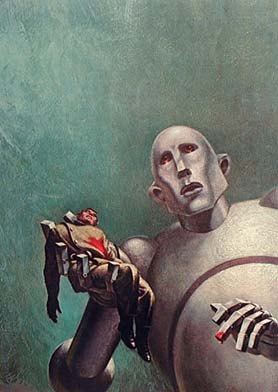 I’ve been pretty hard on Greyhawk novels. They’ve been the butt of more than a few jokes — both mine and others — from those of us who enjoy reviewing and talking about the fantasy genre.
I’ve been pretty hard on Greyhawk novels. They’ve been the butt of more than a few jokes — both mine and others — from those of us who enjoy reviewing and talking about the fantasy genre.
I’m generally pretty forgiving, especially with novels of adventure fantasy. What can I tell you — I’m a fan. But when books can’t be bothered to clamber over the very low bar of my expectations, I’m as capable of a harsh review as anyone.
The novels of Gary Gygax — and in particular his Greyhawk books — routinely limboed under that bar with room to spar, and I’ve said as much in print several times over the years.
Now, I’m second to none in my admiration of Gygax. I consider the man one of the great creative minds of the 20th Century, full stop.
I believe his work with D&D and Advanced D&D — especially the original hardback rules, and the incredibly inventive adventure modules that accompanied them, such as Descent into the Depths of the Earth and The Temple of Elemental Evil — was directly responsible for the mainstream acceptance of fantasy, as manifested in modern role playing obsessions like World of Warcraft and Warhammer.
But his novels? Poo poo.
 However, Gygax wasn’t the only one to pen Greyhawk novels.
However, Gygax wasn’t the only one to pen Greyhawk novels.
Some of them — especially the so-called Greyhawk Classics published in honor of TSR’s 25th anniversary — are remembed quite fondly.
Written by Paul Kidd, Ru Emerson, Keith Francis Strohm, and Thomas M. Reid, and based on some of TSR’s most famous adventure modules, including Against the Giants, Tomb of Horrors, and Keep on the Borderlands, the seven Greyhawk Classic novels formed a nostalgic return to some of the most fondly-remembered adventure settings in gaming.
They were published in mass market paperback by TSR (later Wizards of the Coast) between July 1999 and February 2002, beginning with Against the Giants and ending with Tomb of Horrors.
Here’s the other thing you need to know about the Greyhawk Classic novels: you can’t have them.
They’re among the most collectible D&D novels ever published, and that’s saying something.
…
Read More Read More
 Orbit Books just did a cover launch for SEVEN PRINCES on their official site today: http://www.orbitbooks.net/ I’ve wanted to share this with BG readers for months, and the day has finally come…
Orbit Books just did a cover launch for SEVEN PRINCES on their official site today: http://www.orbitbooks.net/ I’ve wanted to share this with BG readers for months, and the day has finally come… By way of beginning a discussion about Romanticism and fantasy, I’d like to take a quick look at where the Romantics came from. If Romanticism was a revolt against Reason, what was Reason understood to be? If Romanticism, as I feel, is essentially fantastic, is Reason opposed to fantasy? To know Romanticism is to know the Enlightenment which it was reacting against, so in this post I’ll try to describe some characteristics of the 18th-century Enlightenment in England that seem relevant to the development of fantasy. I’ll go up to about 1760, and then in my next post point out some of the counter-currents and proto-Romantic elements that were developing at the time and after.
By way of beginning a discussion about Romanticism and fantasy, I’d like to take a quick look at where the Romantics came from. If Romanticism was a revolt against Reason, what was Reason understood to be? If Romanticism, as I feel, is essentially fantastic, is Reason opposed to fantasy? To know Romanticism is to know the Enlightenment which it was reacting against, so in this post I’ll try to describe some characteristics of the 18th-century Enlightenment in England that seem relevant to the development of fantasy. I’ll go up to about 1760, and then in my next post point out some of the counter-currents and proto-Romantic elements that were developing at the time and after. 


 Webzine
Webzine


 When my agent first told me that he had secured a three-book deal with Pyr Books, I was ecstatic. Three books! What a brilliant stroke of luck.
When my agent first told me that he had secured a three-book deal with Pyr Books, I was ecstatic. Three books! What a brilliant stroke of luck.
